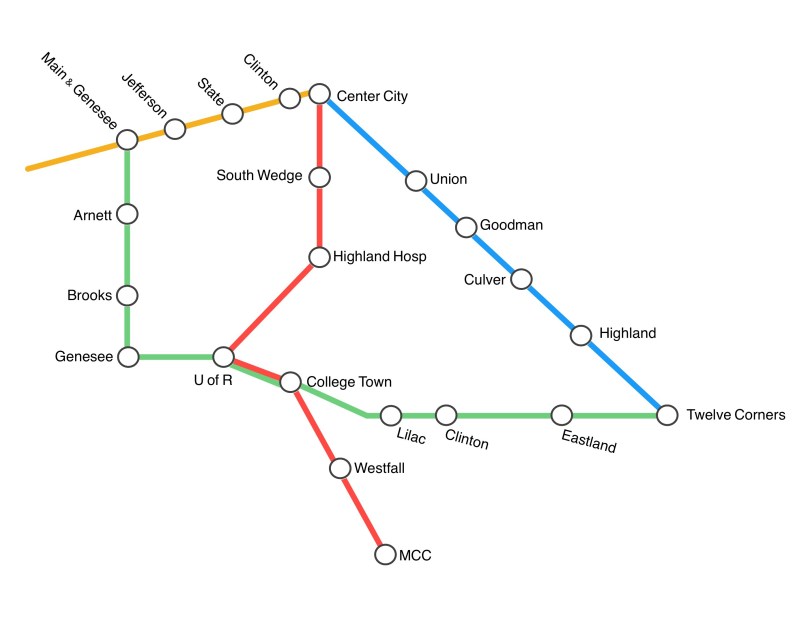It’s a simple question with a very nebulous solution… how do we increase transit ridership by attracting the “occasional rider” in our cities without negatively impacting service for those who rely on it every day? In other words, how do we appeal to the woman who’s car is in the shop and still needs to get to work, or the man who doesn’t want to leave his car at the train station, while keeping service strong for residents who might not be able to make that choice?
Still not seeing it? OK, super simple… how do we create a transit system that appeals to the man wearing a suit while still working for the man that can’t afford one? How does transit appeal to the woman who’s car won’t start while still working for the woman who doesn’t own one? How do we provide a more efficient, user-friendly option for some while continuing quality service for those who rely on the bus as their only option?
With the growing list of over-budget and under-performing urban street car projects, cities are once again turning to new ideas to make cheaper and more flexible buses, for lack of a better word, “cool.” Large cities like Chicago are beginning to try Bus Rapid Transit, where buses move in a dedicated lane, stopping at iconic-looking stations that look more like small train depots.  Large and small cities are beginning to scrap old “hub and spoke” models for a more functional and efficient alternative.
Large and small cities are beginning to scrap old “hub and spoke” models for a more functional and efficient alternative.
It’s simple… subways and street level trains are very expensive to build and maintain, and while people of all socioeconomic statuses are more likely to take a train than a bus, how do we affordably move people, regardless of income, around our cities without breaking the taxpayer piggy bank?
I have a theory, and it’s based on admittedly little research other than what I hear from people who have never ridden the bus in my city of Rochester. One of their top complaints is that they simply don’t know and don’t want to take the time to know two things: A) When a bus is arriving at the nearest stop and B) where that bus goes. When and where, that’s it.
Often I ask these folks who have never ridden an RTS bus in Rochester if they have ridden a subway in New York or the El in Chicago. When they answer yes, I ask them why it’s different from the bus and they often give the same answers. They can A) walk up to a map at any station and see what train goes where and B) They can walk to the platform confident that a train will arrive in a reasonable amount of time.
When and Where. That’s all they need to know. It’s that simple.
While cities continually add tech features like Wifi at bus stops and apps allowing riders to see where their bus is, I truly believe the casual rider simply cares that, when they walk up to a bus stop, they can see where that bus is going and expect it to arrive pretty soon, just like a subway, light rail or elevated train.
Want to improve your bus system? Take 5-10 of your most popular routes, remove their number designation and replace each one with a color, for example, “The Red Line” or “The Blue Line.” Second, have these buses run on 15 minute intervals during peak time and 20 minutes during off-peak. Now, just like an “El Train” map of Chicago, the most casual of users can walk up to any stop along these “lines,” see a map of the color-coded routes, and expect that their bus will arrive shortly.
No fancy digital screens or gimmicks needed, just reliable and consistent navigation you can actually see with your eyes on a simple map. While the map above of my hometown Rochester is fictional (my own flawed rendering of some possible routes for the purpose of this topic) it gives anyone who walks up to any bus stop a clear idea of how to get from point A to point B.
Displaying bus routes like lines on a subway map and providing frequent and regular service along these routes removes one of the most frustrating barriers that keep the casual rider away. Furthermore, providing regular service along these lines ensures that those who rely on the bus every day still experience quality service.
While surely not as simple as pointing it out from my desk while typing on my laptop, coloring our major bus routes removes one more barrier between the potential casual rider and a positive transit experience while minimizing the “gentrifying” effect that might be incurred with an overpriced streetcar. When our transit is clear and regular, it welcomes people from all walks of life, giving our cities another layer of transit potential.

